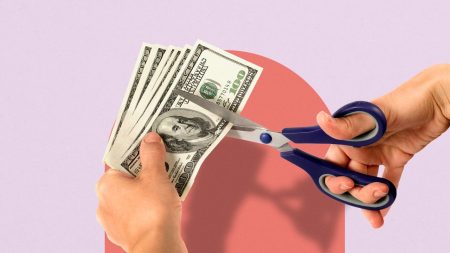This page was originally published in early 2022 and still contains relevant interview quotes from that time. The rest of the article is regularly updated.
Key takeaways
- Secured credit cards are popular credit building tools, but not everyone opens them for the same reasons or uses them in the same way.
- The cardholders and experts featured in this article talk about their credit building journeys using secured cards.
- By getting secured credit cards, they learned how to start building healthy credit habits and how to improve their credit scores even with low credit limits.
If you have bad credit, a limited credit history or a recent negative mark on your credit report, you might have trouble getting approved for many of today’s top credit cards. But there’s another way to prove you can handle credit responsibly — a secured credit card.
Unlike typical credit cards — which are unsecured — secured credit cards give you access to a small line of credit in exchange for a security deposit (usually the same amount as your credit limit). Because you’re securing the line of credit with your own money, lenders are often comfortable issuing secured cards to people who have little to no credit or who are recovering from financial setbacks like bankruptcy.
We spoke to several cardholders who discovered just how big a difference a secured card with a small credit limit can make. Some were originally interviewed in 2022 and others more recently in 2024, and the advice still holds true.
Here’s what they learned as they used secured cards to build their credit history and improve their credit score — and what you can do if you’re ready to do the same.
How to use a secured credit card
Here’s how to use secured credit cards. Start with the following steps:
- Choose the right card. Ideally, you want to find a secured credit card that reports your account activity to the credit bureaus, asks for an affordable security deposit, offers a path to upgrade and doesn’t have outrageous fees.
- Pay the security deposit. After you apply for a secured credit card and get approved, provide the security deposit. You are typically not authorized to use the credit card until you pay the deposit within a certain time frame, although some cards might charge your deposit with your first credit card statement.
- Use the card. Once you pay your security deposit, you can start using your secured credit card, but use it wisely. Avoid maxing out your credit card and keep your balance low to maintain a good credit utilization ratio.
- Pay your balance on time and in full. The point of a secured credit card is to build credit, so the best way to go about this is by practicing solid habits. You can start by always paying your balance on time. If possible, pay in full every month.
- Graduate to an unsecured credit card. Although this varies by issuer, some secured credit cards automatically graduate to traditional unsecured credit cards after you establish a history of on-time monthly payment.
Advice from cardholders on using secured cards wisely
We’ve compiled advice on using secured credit cards to build credit.
A secured card is an opportunity to show responsible credit habits
Jessica Clark, who runs the cooking blog Gluten Free Supper, and her husband used a secured credit card to build credit and dig themselves out of a bad credit hole. “My husband and I had to file Chapter 7 bankruptcy about seven years ago,” Clark said. “We really wanted to purchase a home, but knew that would be next to impossible with having just filed bankruptcy and having bad credit.”
“I applied for a secured credit card and added my husband as an authorized user,” Clark said. “We used our cards regularly, making sure to keep our usage under 30 percent.” This strategy helped them earn the financial freedom to escape a rental market that required them to move nearly every year.
While Clark was working to improve her bad credit, Sam McRae, an injury attorney in Georgia, was in the position of not having any credit history at all. “I was taught to pay everything with cash by really frugal parents,” McRae explained. His cash-only spending had left him with no visible credit file. “After law school, I realized I didn’t have enough credit to get a loan or a credit card.”
He, too, turned to a secured credit card. Both Clark and McRae were able to use secured credit cards to prove they could use credit responsibly — and both were able to quickly build their credit scores as a result.
Once lenders are able to see that you can handle a secured credit card without overspending or missing payments, they will be more likely to increase your credit line, refund your security deposit or give you the opportunity to apply for an unsecured credit card.
Bankrate editor Liza Carrasquillo took this approach as a recent college graduate: “I applied for the Discover it® Secured Credit Card and put down a $400 deposit, then began my credit-building journey by setting up autopay only using it to pay for gas,” she says. “Eventually, it graduated me to an unsecured version and refunded my money after raising my credit limit.”
I got my credit score above 700 using only [a secured card] and paying it off on time each month — not bad considering I hadn’t put any other effort into bettering my credit.
— Liza Carrasquillo
Editor, Bankrate
This almost perfectly lines up with Bankrate writer Seychelle Thomas’ experience as a bank branch manager. “When I worked as a branch manager for PNC Bank, one of the most common ways I suggested for people build credit was to get a secured credit card,” she says. “One client was working full-time and earning good money, but didn’t have the credit he needed to buy a new car. I suggested getting a secured card, which he used just to cover a small monthly bill. After just six months of on-time payments, he was able to upgrade to an unsecured credit card with a $2,000 limit and get his security deposit back.”
Even a small security deposit can make a big difference
When deciding whether to apply for a secured or unsecured credit card, the deposit requirement and maximum deposit are worth a close look. When you open a secured credit card account, lenders require you to put down a security deposit, which helps protect the lender if you aren’t able to pay your credit card balance.
On one hand, a low security deposit is obviously appealing since it means you’re tying up less money as you build credit. On the other hand, most secured cards match your credit limit to your security deposit, so if you put down a large deposit, it will be easier to keep your credit utilization in check.
Brian T. Edmondson, founder of Bankruptcy Recovery Foundation, started to rebuild his credit after bankruptcy with a $200 security deposit on a card. But some secured cards allow you to put down even less collateral. For example, the Capital One Platinum Secured Credit Card allows you to start with a deposit as low as $49 if you qualify.
In some cases, you won’t even need to come up with the money in advance. “The secured cards that I used did not require a security deposit upfront,” Clark explained. Instead, the first statement for each card would include a fee in the amount of the security deposit. “I didn’t need to come up with the money until about a month later when the payment was due. It was doable because it was only $200.”
If you’re looking for a high-limit secured card, you can put down a larger deposit in exchange for a larger credit line. The to consistently pay off a $30 monthly subscription, and my credit score has gone up over 50 points since.
— Madison Hoehn
Editor, Bankrate
Understand and keep an eye on your credit score
If you’re hoping to use a secured credit card to improve your credit score, it’s important to know how your credit score is calculated. Your FICO credit score, for example, is calculated based on:
- Payment history (35 percent)
- Amounts owed (30 percent)
- Length of credit history (15 percent)
- Credit mix (10 percent)
- New credit inquiries (10 percent)
Similar factors are also considered for your VantageScore, although they are weighted differently. But don’t worry, you don’t need to be too concerned with the different credit scoring models because the basic principles of building credit are the same: Make small charges on your secured credit card every month and then pay them off on time and in full.
Most banks and credit card issuers offer tools to help you track your credit score, and many of those tools are free. The best tools for credit monitoring provide insights into recent credit score changes, as well as offering tips to help you continue improving your credit.
Use these credit trackers to keep an eye on your credit score and ensure it’s going in the right direction. “I got to see my score slightly rising as I used and paid off the secured card each month,” Clark said.
You won’t be stuck with a secured card forever
If you’re anxious about the costs associated with a secured credit card — or if you’re concerned that people might judge you for carrying a secured card — don’t worry. Secured cards look exactly like every other credit card, and most secured card issuers regularly review your account to determine whether you’re eligible for a security deposit refund.
“If you use a secured credit card to rebuild your credit, at some point you will get your initial security deposit returned back to you,” Edmondson explained. “I just received my initial deposit back from Capital One for one of my secured cards.”
That typically happens once you’ve proven to your credit card issuer that you’re responsible enough for an unsecured card. At that point, you’ll be ready to move on to the next step in your credit journey, whether that’s with the same issuer or a new one.
McRae continues to use his secured credit card for small purchases — even after building his credit score and moving on to better credit cards. “I still use my secured card to auto-draft my Netflix account and pay it off at the end of the month,” McRae said. “I keep the secured card because it’s my oldest credit card, and the payment history is perfect.”
The bottom line
If you’re struggling to get approved for a traditional credit card, a secured card could be the answer. There are many reasons people turn to secured credit cards. Some are new to credit, while others are rebuilding after a financial setback. The basic formula for building credit, however, is the same for everyone: Prove responsible use by borrowing against your line of credit and paying it off in full.
“Don’t be afraid of credit cards,” McRae said. “If used correctly, they can be a great tool to build your credit score.”
Read the full article here












